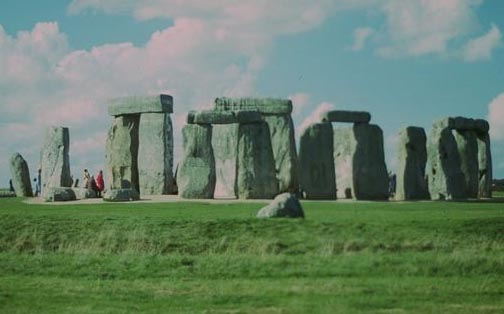
|
Credit & Copyright: Clive Ruggles
Explanation:
Stonehenge consists of large carved stones
assembled about 4000 years ago.
Long before modern England was established, ancient inhabitants
somehow moved 25 ton rocks nearly 20 miles to complete it.
From similar constructs of the era, people could learn the time
of year by watching how the
Sun and
Moon rose and set relative to
accurately placed stones and pits. The placement of the boulders at
Stonehenge, however, is not impressively
accurate by today's standards, nor even by the standards of that time.
Therefore, modern scholars interpret Stonehenge
as a colossal monument to the
Sun in celebration
of the predictability of the
seasons.
|
January February March April May June July August September October November December |
| ||||||||||||||||||||||||||||||||||||||||||||||||
NASA Web Site Statements, Warnings, and Disclaimers
NASA Official: Jay Norris. Specific rights apply.
A service of: LHEA at NASA / GSFC
& Michigan Tech. U.
Based on Astronomy Picture
Of the Day
Publications with keywords: Earth - Sun - ancient observatory
Publications with words: Earth - Sun - ancient observatory
See also:
- APOD: 2025 December 8 Á Flying Over the Earth at Night
- APOD: 2025 December 7 Á The Sun and Its Missing Colors
- APOD: 2025 September 7 Á All the Water on Planet Earth
- APOD: 2025 June 15 Á Two Worlds One Sun
- APOD: 2025 May 21 Á International Space Station Crosses the Sun
- APOD: 2025 March 16 Á Venus and the Triply Ultraviolet Sun
- APOD: 2024 December 29 Á Methane Bubbles Frozen in Lake Baikal
